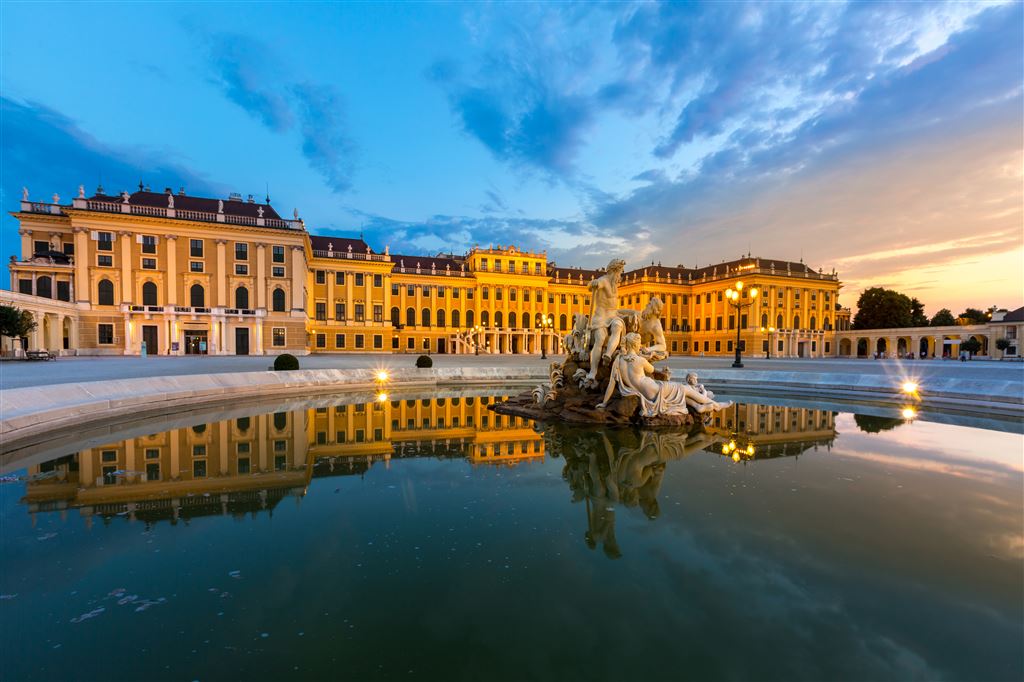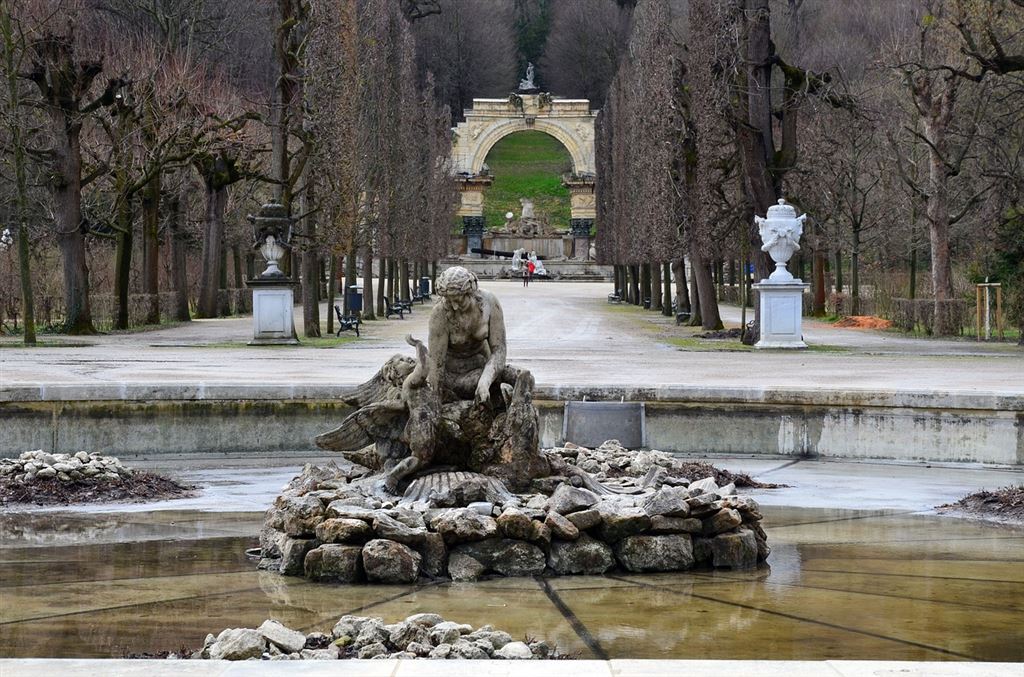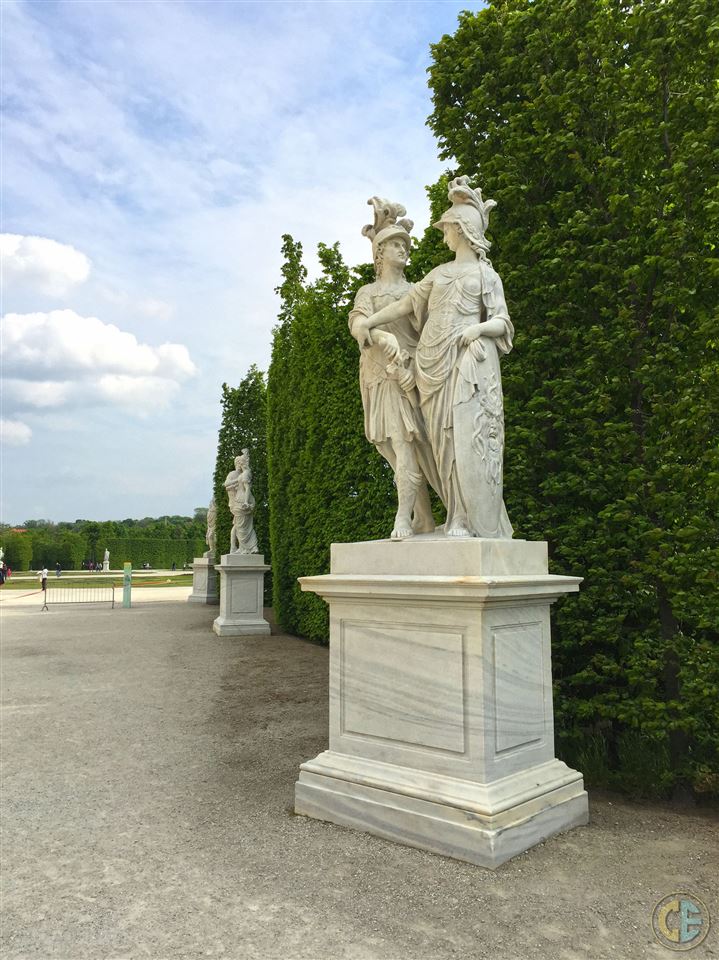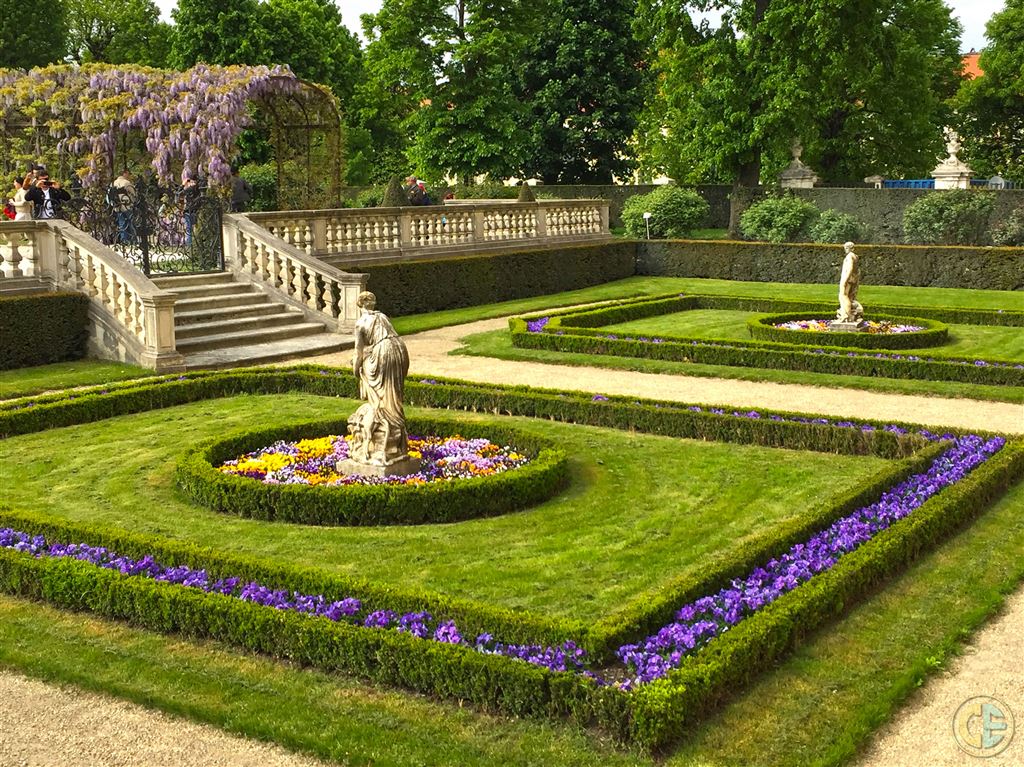Located in Vienna, Austria, Schönbrunn Palace has a history that dates to the Middle Ages. However, it was not until 1569 that the estate came into the possession of the House of Habsburg (Haus Österreich) through Maximilian II. Prior to that, there were many documented owners of the property that would eventually evolve into the opulent and massive Palace we know today.
 Schonbrunn Palace at Dusk
Schonbrunn Palace at Dusk
A paradigm shift in the evolution of the estate came in the seventeenth century when Holy Roman Emperor Leopold I, King of Hungary, Croatia, and Bohemia was in power. The Emperor gave orders to architect Johann Bernhard Fischer von Erlach, one of the most important architects of the Baroque era, to build a hunting estate for his son. Little did King Leopold I know that the estate would grow into a world-recognized palatial monument that people would talk about for ages.
 Schonbrunn Castle Park
Schonbrunn Castle Park
From the 18th century to 1918, Schönbrunn would be the official residence of the House of Habsburg. However, following the downfall of the Habsburg monarchy in November 1918, the House of Habsburg and Schönbrunn Palace became the property of the newly founded Austrian Republic. The government then conserved all of the estate's belongings and turned them into a museum.
Today, Schönbrunn Palace provides Austria with one of its major sources of revenue as people flock to the country to tour the place. Here, people view the stately rooms, art, furnishing, and adornments used during an ancient era. These things allow one to receive a glimpse into the general culture and times when monarchs ruled. In addition, the Gardens of Schönbrunn provide a copiously verdant and colorful aristocratic spectacle where the tourists can explore gardens, grounds, and fountains as they get a glimpse of life-size sculptures representing mythological deities.
 Statues at Schönbrunn
Statues at Schönbrunn
 The Beautiful Grounds of Schönbrunn
The Beautiful Grounds of Schönbrunn
Schönbrunn Palace is enormous, stretching to over 1.2 kilometers from east to west. Annual events are held here attracting both the Viennese population and international tourists. The Palace also plays host to numerous events including art shows, concerts, political meetings, festivals, and more.
Since its opening to the public in 1779, Schonbrunn Palace and its Gardens have received various awards and appreciation worldwide. In 1996 it became a UNESCO World Heritage Site.